Tablecloth Whip-off Trick
The classic whip-off the tablecloth trick is a must for any aspiring science demonstrator. It’s guaranteed to either bring down the house or to get […]
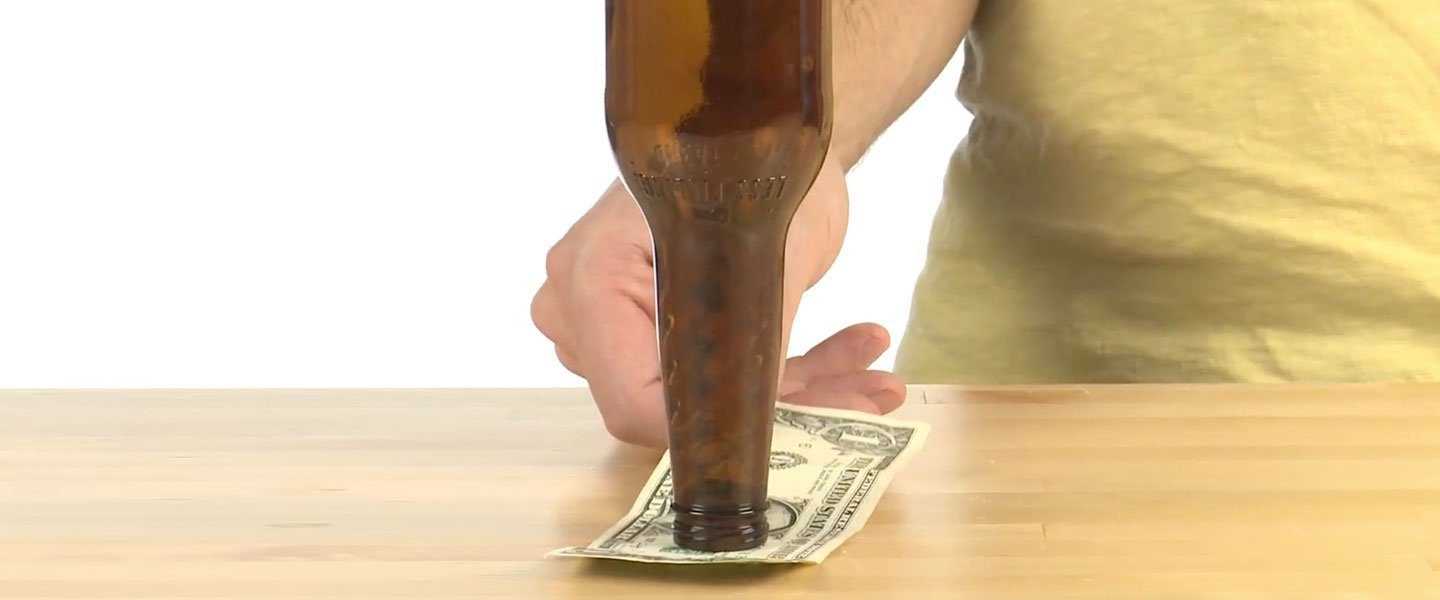
This setup looks a lot like a one-container version of the tablecloth trick and you might be able to present it that way, too. Of course, it’s important that you leave out that fact that it’s basically just the opposite of the well known “yank the cloth out from under the table setting” stunt. Borrow some paper currency from a friend, grab an empty soda bottle, and find an open table. Have fun learning about Newton’s Laws of Motion.
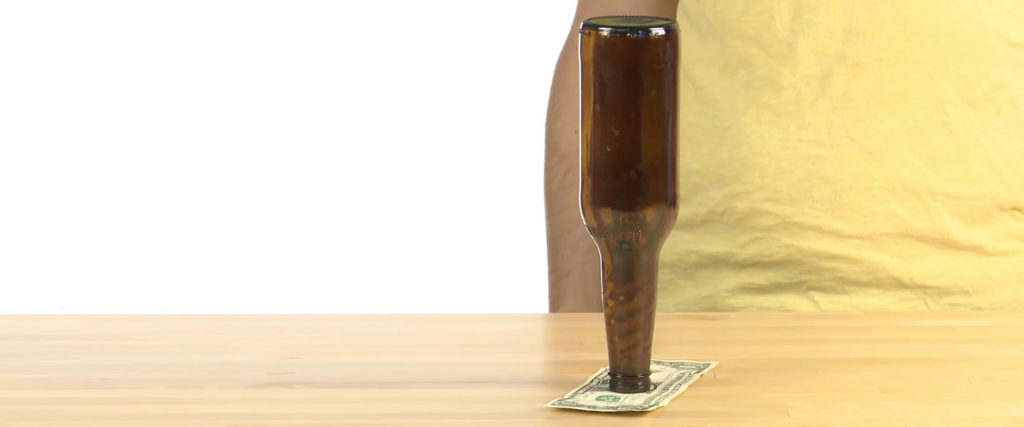
Smooth the currency onto a clean, flat surface. Place the bottle open end down on top of the money in about the center off the bill. Steady the bottle carefully.
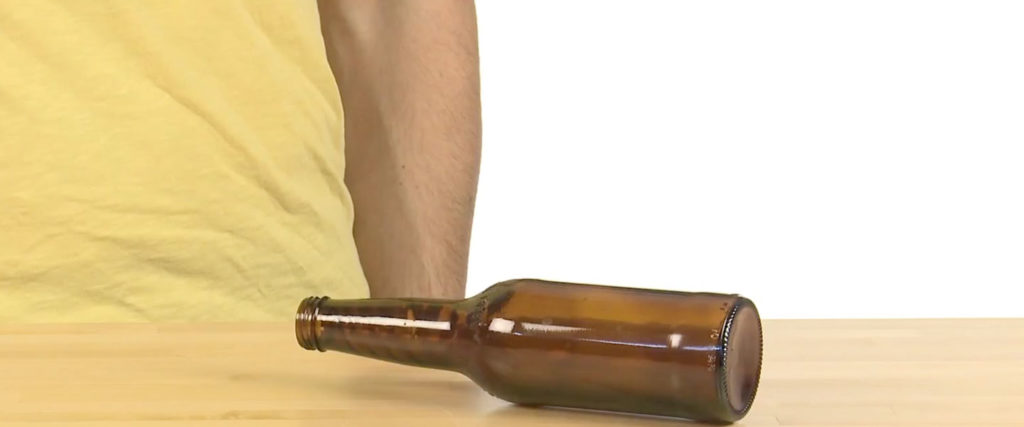
Tell your friend you’ll add the same amount of money after the currency is pulled out from under the bottle if (1) the bottle isn’t touched and (2) the bottle doesn’t fall over.
Watch the efforts fail… watch them fail a lot! Just don’t laugh.
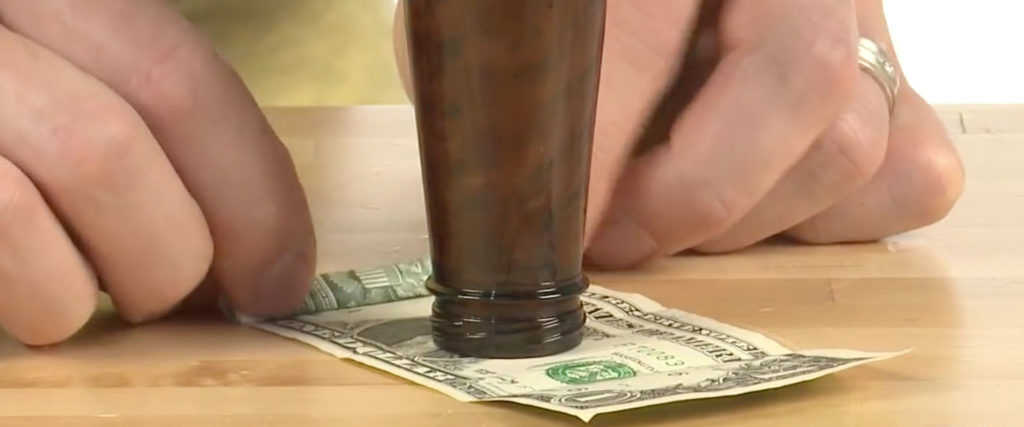
Offer to try it, too, but if you actually do it, you get to keep the money.
Start to carefully roll up the currency from one end and roll towards the bottle.
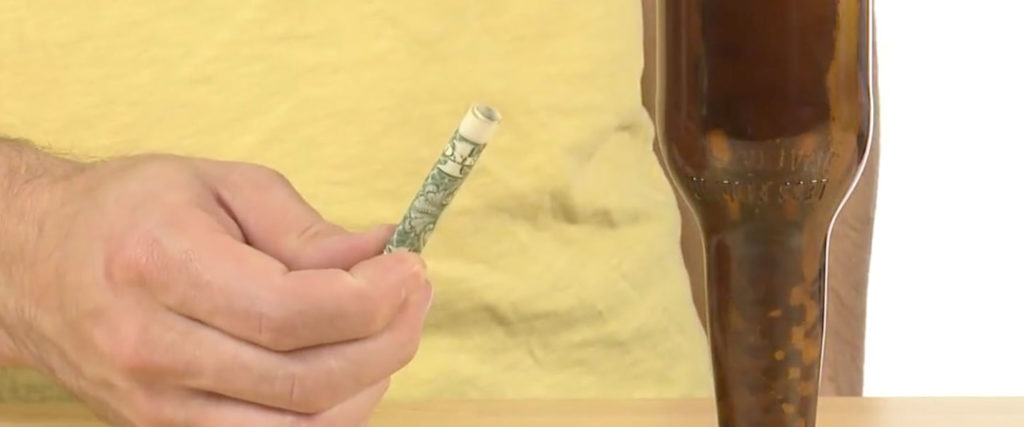
When the rolled up bill gets to the mouth of the bottle, continue rolling but be careful to slowly nudge the bottle towards the far edge of the currency. Gently push the bottle in tiny increments as you roll up the bill.
Be patient and you’ll pocket the winnings!
Inertia comes from Newton’s First Law of Motion. An object in motion (or at rest) tends to stay in motion (or at rest) unless a force acts on it to change its speed, to stop it, to change its direction, or to get it moving. This means that the balanced bottle wants to stay in the position it has and you want to help it do that to get the cash. In other activities, you’ve seen how some sudden, quick motions have been used to overcome inertia successfully. The key to safely removing the bottle from the money this time, however, is just the opposite: slow and steady wins the race. When you attempt to remove the dollar bill by pulling it out, you apply an outside force that causes the bottle to topple every time. Game over.
This is a case where friction takes center stage and you have to work around it. There is some serious friction between the bill and the bottle and the bill and the tabletop . There is so much friction, in fact, that the bill pulls the empty bottle with it every time. To reduce the impact of friction, you have to roll the currency right up to the edge of the bottle opening and then nudge and coax the bottle to slide a little as you roll. This process is slow-moving, but doesn’t provide enough force to tip the bottle.
Of course, the assumption is that you’ll be using older bills that may be a bit crumpled and dirty. Those factors increase friction. You really should practice with newer bills just to make sure you know what to expect with one. In either case, rolling the bill is a sure winner.